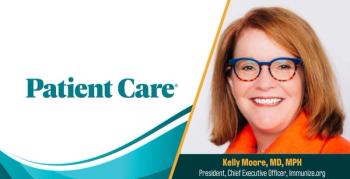
Spanish Flu in Monkeys Causes Uncontrolled Immune Response
WINNIPEG, Manitoba -- The 1918-19 Spanish flu may have killed 50 million persons by unleashing an uncontrolled immune response that fatally damaged lung tissue, according to researchers here.
WINNIPEG, Manitoba, Jan. 17 -- The 1918-19 Spanish flu may have killed 50 million persons by unleashing an uncontrolled immune response that fatally damaged lung tissue, researchers here say.
The finding - based on the first studies of the re-constituted virus in non-human primates - appears to parallel what happens when humans are infected with the highly pathogenic avian flu now circulating in birds, according to Darwyn Kobasa, Ph.D., of the Public Health Agency in Canada.
"The H5N1 virus can also cause very serious disease and it appears to do so in a way quite similar to the 1918 virus," Dr. Kobasa told reporters.
He said studying the effects of 1918-19 virus - painstakingly synthesized from DNA sequence data in the agency's Level Four containment facilities - may help researchers predict the effects of a new flu pandemic.
"A greater understanding of viruses that caused past pandemics will help us predict what might be expected," Dr. Kobasa said.
With colleagues at the University of Washington in Seattle and the University of Wisconsin in Madison, Dr. Kobasa compared the effects of the 1918 virus with a modern circulating flu virus in a cohort of 10 macaques.
The central difference was that the innate immune response in the seven animals infected with the 1918 virus was uncontrolled and did not abate over time, Dr. Kobasa and colleagues reported in the Jan. 19 issue of Nature.
In contrast, the three animals infected with another H1N1 virus, the A/Kawasaki/173/01 strain, had an initially robust immune response that moderated as the virus was cleared, said Michael Katze, Ph.D., of the University of Washington.
"Following that robust response, the monkeys quickly cleared the virus," Dr. Katze told reporters.
The remaining seven animals continued to sicken, with an inflammatory response that caused extensive damage to lung tissue, and they had to be euthanized eight days after infection, he said.
The conclusion, he said, is that "instead of protecting individuals that were infected with the highly pathogenic virus, the immune response is actually contributing to the lethality of the virus."
Exactly why that should be so remains unclear, although suspicion centers on a viral protein called nonstructural protein 1, or NS1, which has been shown to modulate the immune response to the H5N1 virus.
The problem, Dr. Katze said, is that NS1 has been characterized as an interferon antagonist, which would be expected to depress the immune response, while in this case, the immune response was exaggerated.
The researchers said NS1 should be the target for future study to clarify its role. One possible experiment, they said, would be to synthesize a virus with most of the 1918 genes, substituting a modern NS1 gene, and see what effect it has on animals.
"We know the 1918 virus grew tremendously well in non-human primates, but we don't know why," said Yoshihiro Kawaoka, D.V.M., Ph.D., of the University of Wisconsin. "That's what we need to study now."
The exaggerated immune response may also explain why the 1918-19 virus, unlike most flu strains, took its victims mainly from the young and healthy - those whose immune systems would respond most strongly, the researchers said.
To ensure they were infected, the experimental animals were given heavy doses of both viruses - about seven million infectious units by various routes - but that is unlikely to explain the lethality of the 1918-19 virus, Dr. Kobasa said, because the other monkeys had a normal response to the flu.
The test virus was created in the Canadian labs, using sequence data reported beginning in 1999 by Jeffery Taubenberger, M.D., Ph.D., of the Armed Forces Institute of Pathology in Rockville, Md., and colleagues.
One possible clinical application of the research, Dr. Kobasa said, is that first-responders to a new pandemic might be given antiviral agents - as is already proposed - but might also be treated with drugs to mute their inflammatory response.
The research is an important step in preparing for potential pandemics, said Yueh-Ming Loo, Ph.D., and Michael Gale Jr., Ph.D., of the University of Texas Southwestern Medical Center in Dallas.
"Unveiling the contribution of an aberrant host response to the pathogenesis of the 1918 virus is just the beginning of efforts to understand the disease mechanisms" of pandemic viruses, said Drs. Loo and Gale, who were not involved in the research.
Writing in an accompanying News & Views article, they said a new pandemic is a "real and continuing" threat that must be countered by deeper understanding of the origin, transmission and virulence of pandemic flu stains and how they interact with host immune systems to cause disease.
Newsletter
Enhance your clinical practice with the Patient Care newsletter, offering the latest evidence-based guidelines, diagnostic insights, and treatment strategies for primary care physicians.























































































































































































































































































